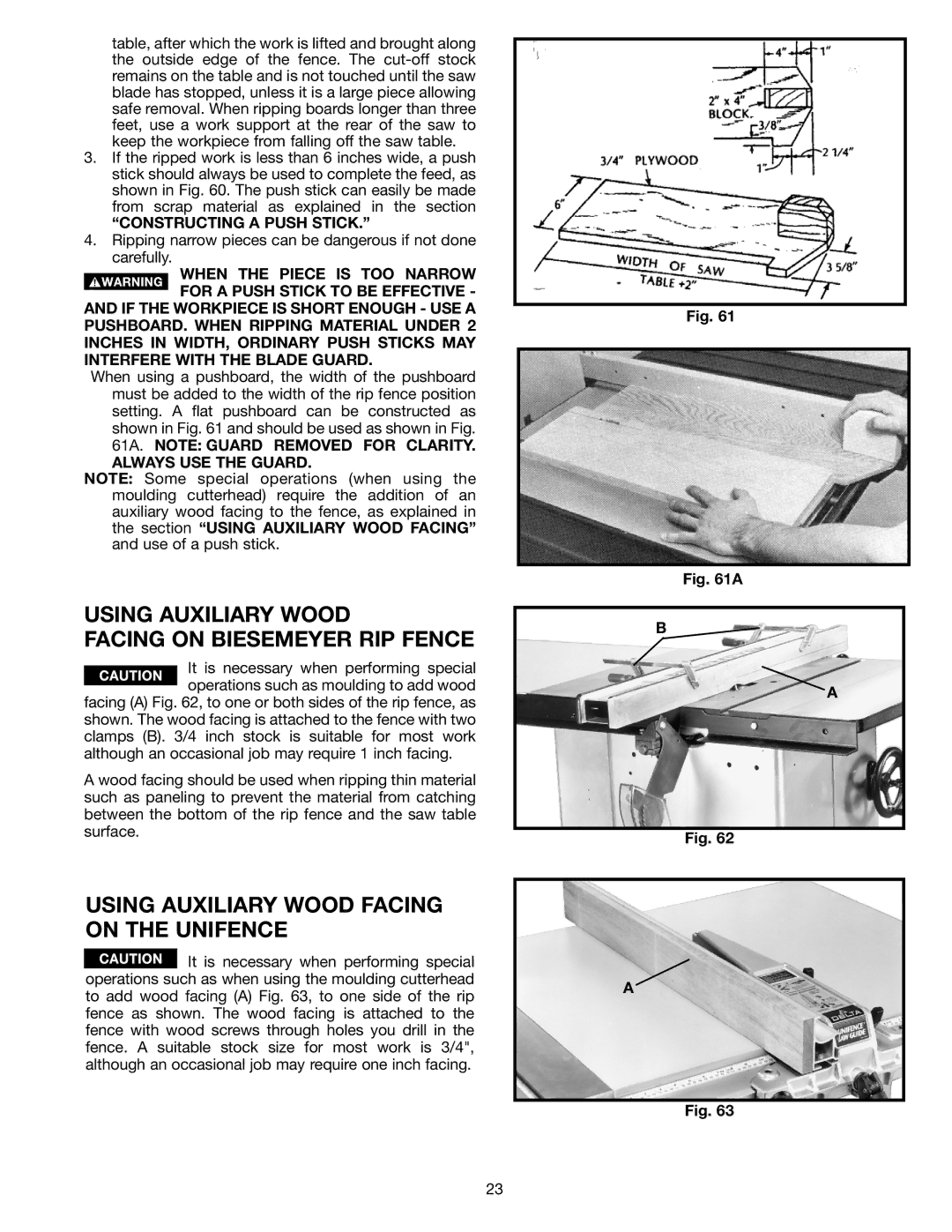
table, after which the work is lifted and brought along the outside edge of the fence. The
3.If the ripped work is less than 6 inches wide, a push stick should always be used to complete the feed, as shown in Fig. 60. The push stick can easily be made from scrap material as explained in the section
“CONSTRUCTING A PUSH STICK.”
4.Ripping narrow pieces can be dangerous if not done carefully.
WHEN THE PIECE IS TOO NARROW FOR A PUSH STICK TO BE EFFECTIVE -
AND IF THE WORKPIECE IS SHORT ENOUGH - USE A PUSHBOARD. WHEN RIPPING MATERIAL UNDER 2 INCHES IN WIDTH, ORDINARY PUSH STICKS MAY INTERFERE WITH THE BLADE GUARD.
When using a pushboard, the width of the pushboard must be added to the width of the rip fence position setting. A flat pushboard can be constructed as shown in Fig. 61 and should be used as shown in Fig.
61A. NOTE: GUARD REMOVED FOR CLARITY.
ALWAYS USE THE GUARD.
NOTE: Some special operations (when using the moulding cutterhead) require the addition of an auxiliary wood facing to the fence, as explained in the section “USING AUXILIARY WOOD FACING” and use of a push stick.
USING AUXILIARY WOOD
FACING ON BIESEMEYER RIP FENCE
It is necessary when performing special operations such as moulding to add wood facing (A) Fig. 62, to one or both sides of the rip fence, as
shown. The wood facing is attached to the fence with two clamps (B). 3/4 inch stock is suitable for most work although an occasional job may require 1 inch facing.
A wood facing should be used when ripping thin material such as paneling to prevent the material from catching between the bottom of the rip fence and the saw table surface.
USING AUXILIARY WOOD FACING ON THE UNIFENCE
![]() It is necessary when performing special operations such as when using the moulding cutterhead to add wood facing (A) Fig. 63, to one side of the rip fence as shown. The wood facing is attached to the fence with wood screws through holes you drill in the fence. A suitable stock size for most work is 3/4", although an occasional job may require one inch facing.
It is necessary when performing special operations such as when using the moulding cutterhead to add wood facing (A) Fig. 63, to one side of the rip fence as shown. The wood facing is attached to the fence with wood screws through holes you drill in the fence. A suitable stock size for most work is 3/4", although an occasional job may require one inch facing.
Fig. 61
Fig. 61A
B
A
Fig. 62
A
Fig. 63
23
